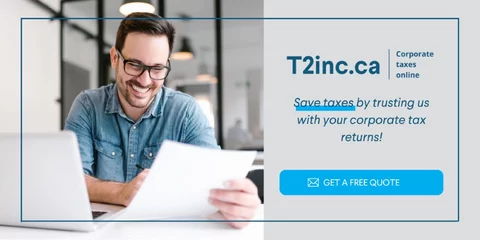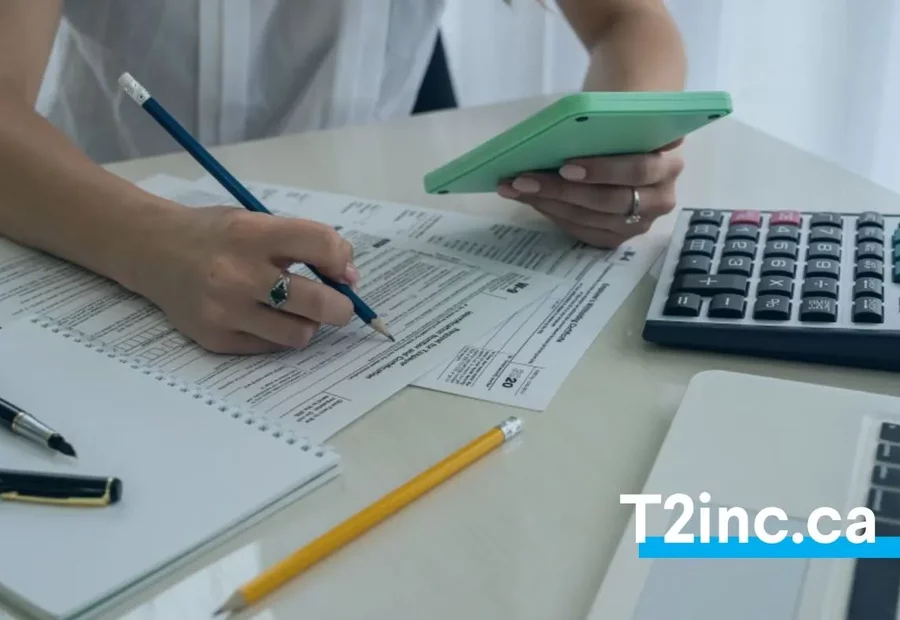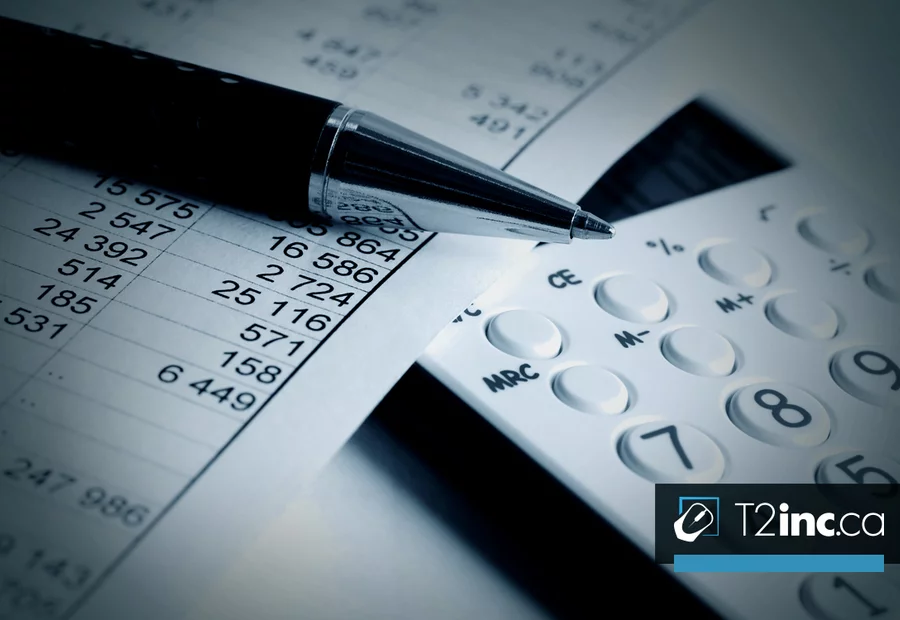Ontario Small Business Tax Rate: Complete Guide for Small Business Owners

Understanding the Canadian tax system isn't always easy. Between Ontario's corporate tax rates that vary based on income, the peculiarities of Canadian-controlled private corporations (CCPCs), and complex deductions to master, it's easy to get lost. Inadequate tax planning can result in overpayment of taxes or missed financial opportunities.
In this guide, we explain everything you need to know about corporate income tax rates for small businesses in Ontario. Find out what a business owner needs to know about calculating business taxes before filing a business tax return with the Canada Revenue Agency.
What is Ontario's small business tax rate?
The Ontario corporate tax rate is the percentage of taxable income that a business must pay to the federal and provincial governments. The rate depends on the company's structure, income, and eligibility for tax programs such as the Small Business Deduction (SBD).
Lower rate for corporations in Ontario
Corporations incorporated in Ontario benefit from a reduced tax rate on the first $500,000 of active income. This tax mechanism is designed to reduce their tax burden, encourage reinvestment in their activities and strengthen their competitiveness.
However, claiming the Small Business Deduction (SBD) in Ontario depends on certain criteria, particularly the nature of the income and taxable capital employed in Canada. When the taxable capital business limit of a CCPC exceeds $10 million, the business limit reduction begins. At $50 million, the deduction is completely eliminated, and the company is subject to the general corporate tax rate on all income, but may also be subject to Ontario's corporate minimum tax.
Here are the details of the provincial and federal corporate tax rates that will apply in 2024:
- Reduced provincial corporate tax rate: 3.2% on the first $500,000 of income eligible for the federal Small Business Deduction.
- Reduced federal corporate tax rate: 9% on the same amount.
Example of reduced tax calculation
To put this in context, let's take the example of an Ontario CCPC with active business income of $600,000 in 2024. The first $500,000 qualifies for the combined reduced rate of 12.2% (3.2% provincial tax + 9% federal small business deduction), while the remaining $100,000 is taxed at the combined general rate of 26.5% (11.5% provincial tax + 15% federal).
Here's how the tax is calculated:
- For the $500,000 at the reduced rate: $500,000 x 12.2% = $61,000
- For the $100,000 at the regular rate: $100,000 x 26.5% = $26,500
The total net tax payable is $87,500. This demonstrates how the federal and Ontario corporate income tax rates create significant savings for small businesses in Canada compared to the higher tax rates applied under general taxation.
The ordinary tax rate
If a company's taxable income exceeds $500,000 or does not qualify for the reduced small business tax rate, it is subject to the combined basic corporate tax rate of 26.5%. This structure ensures fair taxation of higher-income corporations and those not eligible for specific tax breaks.
Here are the rates of corporate income tax that apply in Ontario:
- General rate in Ontario: 11.5
- General rate in Canada: 15%.
Sample corporate tax calculation
Consider an Ontario corporation with taxable income of $800,000. The first $500,000 of this income qualifies for the reduced combined rate of 12.2%. However, the remaining $300,000 is taxed at the standard combined rate of 26.5%.
Here's the calculation:
- For the $500,000 at the reduced rate: $500,000 x 12.2% = $61,000
- For the $300,000 at the ordinary rate: $300,000 x 26.5% = $79,500
The total tax payable would therefore be $140,500. Thanks to the reduced rate on the first $500,000, the company saves a significant amount, underscoring the importance of taking advantage of tax breaks to optimize financial management.
The individual tax table
For unincorporated sole proprietors, business income is treated as personal income and subject to the personal tax schedule. This means that your business income is added to your other sources of income, such as employment or investment income, and taxed in progressive brackets up to a maximum of 46.16%.
In 2024, the rates applicable to individuals in Ontario are as follows
- Federal rate: 15% to 33
- Provincial rate: 5.05% to 13.16
If your business generates significant income, or if you don't need to use all of the income for your personal finances, incorporation can offer significant advantages: lower taxes, easier reinvestment, and separation of personal and business finances. However, it does come with additional obligations, such as filing a T2 return and structured accounting follow-up. These costs are often offset by tax savings, especially for growing businesses or those with high net income.
At T2inc.ca, we simplify the process of incorporating a business through an accessible online service that is completed with the help of our partner attorneys. Contact our team to discover the benefits tailored to your specific needs.

Maximize your Ontario small business deductions
Tax deductions reduce your company's taxable income, which directly reduces the taxes you pay. They also allow you to reallocate these savings to fund projects, strengthen cash flow or grow your business. By reducing your taxable income, these deductions can help you benefit from a lower tax rate, especially if your business qualifies for the reduced corporate tax rate in Ontario.
Here are some relevant examples of expenses that can be deducted to reduce your Ontario tax rate:
- Office or telecommuting expenses: include rent, utilities, or a portion of household expenses if you work from home.
- Business travel expenses: include transportation, lodging and meals when traveling for business.
- Office supplies and equipment: such as computers, software or office equipment essential to your business.
- Professional insurance: includes premiums for your business premises or professional liability insurance.
- Marketing and advertising expenses: such as online campaigns, website design or promotional content creation.
- Professional fees: including accounting, tax and legal services related to your business.
These deductions, coupled with tax credits like the federal tax abatement, reduce the overall net tax liability for corporations and small businesses.
How do I calculate my small business taxes in Ontario?
To calculate your business taxes, it's important to follow a structured method that takes into account several elements: your gross receipts, eligible expenses, applicable tax rates in Canada, and available credits or exemptions. By following each step, you'll be able to accurately determine the amount you owe for the current tax period.
- Estimate your taxable income by adding all gross income sources, including capital gains and corporate investment income, and subtracting eligible expenses.
- Apply the tax rates that apply, whether it's the reduced rate or the general corporate tax rate.
- Claim available credits, such as the federal small business deduction, to further lower your liability.
Ontario small business tax obligations
As a business owner, it's important to meet your company's specific tax deadlines to avoid penalties and administrative complications from the Canada Revenue Agency (CRA). Here's what you need to know:
- T2 return: The deadline for filing a T2 return varies depending on your company's fiscal year end and the date your first corporate income tax return is due. Generally, the return must be filed within six months of the end of the fiscal year. T2inc.ca simplifies this process by taking care of your T2 returns for guaranteed compliance and peace of mind.
- Installment payments: Installment payments are required when your annual tax exceeds a certain threshold. These payments must be made regularly throughout the tax year to avoid interest or penalties.
Be sure to keep your accounting records up to date to avoid penalties.
Get help with my Ontario corporate income tax?
Managing corporate taxes in Canada can be challenging. But with ever-changing regulations and complex tax rules, many businesses pay more tax than they should or miss out on important deductions. This can hurt your cash flow and hinder the development of your business.
At T2inc.ca, we understand the unique challenges faced by small businesses in Canada. Our CPA accountants and business tax specialists are here to simplify the process, optimize your returns, and ensure you receive all the tax benefits you're entitled to.
To file your corporate income tax return quickly and easily at a very affordable price, contact us today! We'll help you ensure compliant and efficient tax management.
Contact our experts
Have a question? Need help? Fill out our online form to get help from our experts.
Contact usNeed more help?
Contact us by filling out our form
Are you interested in our services, but would like more information before taking the plunge? Contact us today and one of our tax accountants will be in touch to help you.
At T2inc.ca, we're committed to helping business owners manage their company's tax affairs so they can grow their business.




